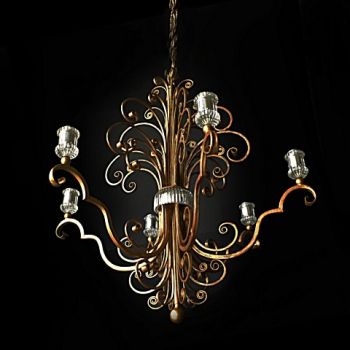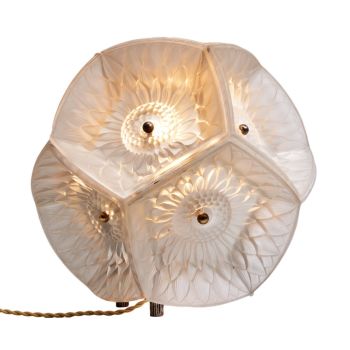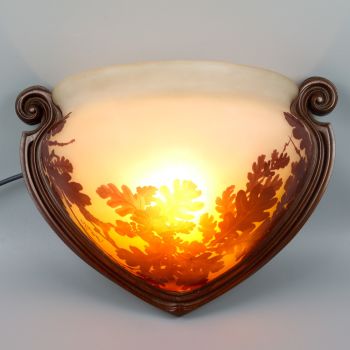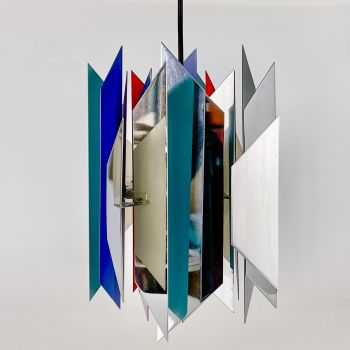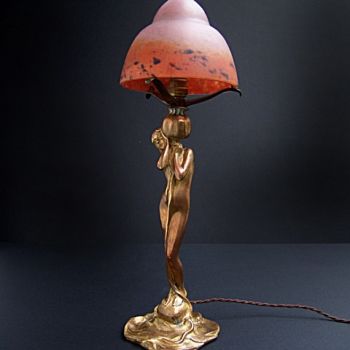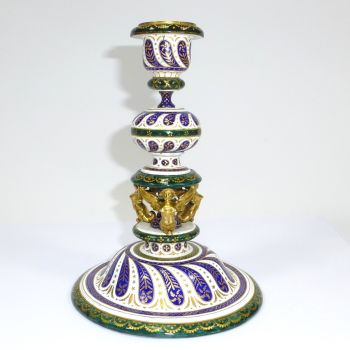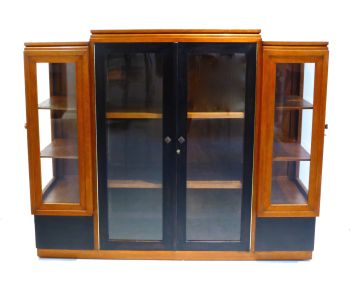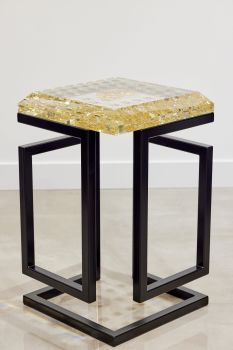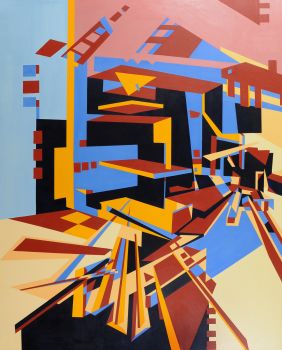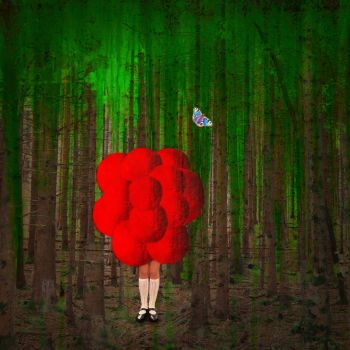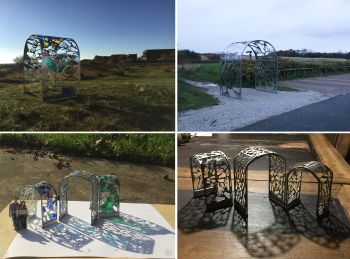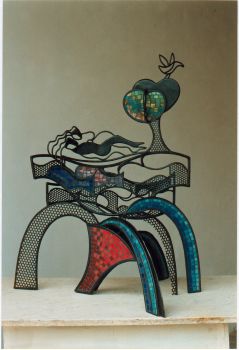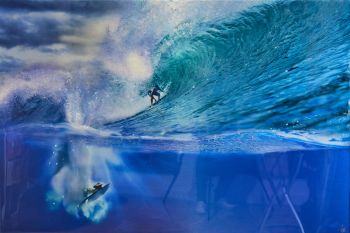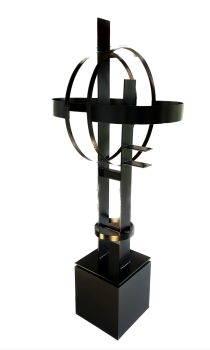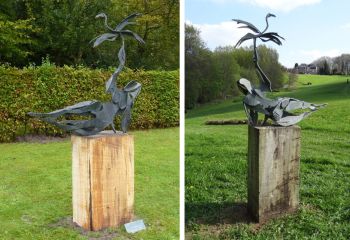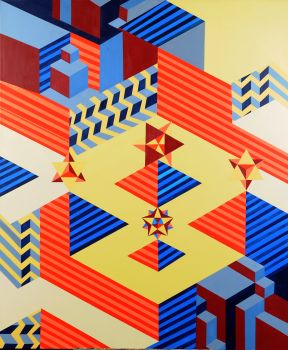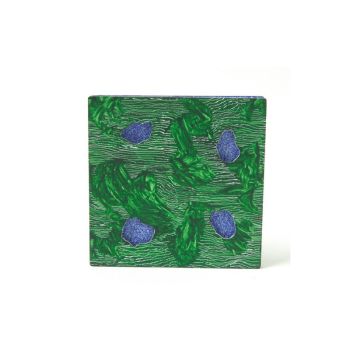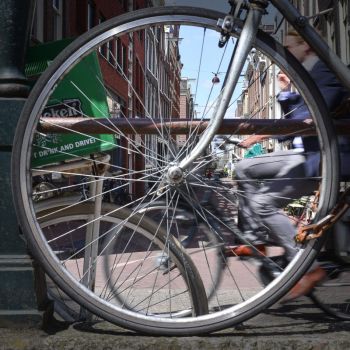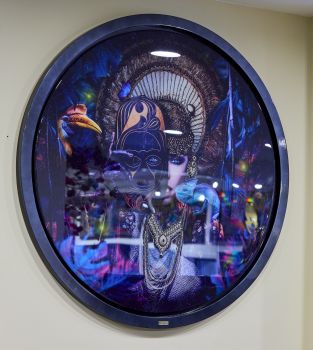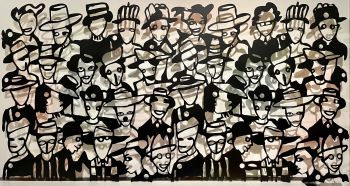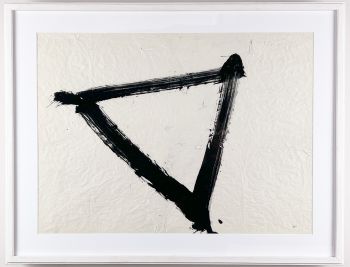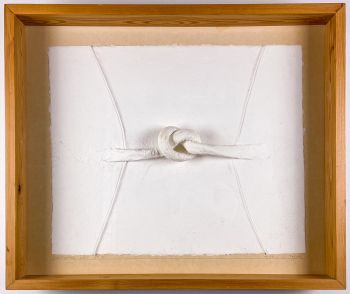Desk lamp, model 9227 – Idman, Finland ca 1955 1950 - 1960
Paavo Tynell
AluminiumAcierMétalLaiton
45 ⨯ 23 ⨯ 23 cm
ConditionVery good
€ 2.450
Van Kerkhoff Art
- Sur l'oeuvre d'artA painted aluminium, brass and steel adjustable desk lamp with perforated shade, model 9227. Designed by the renowned Finnish lighting designer Paavo Tynell in the 1940’s and made by Idman Oy, Helsinki circa 1955.
The desk lamp has a round lacquered steel base. A brass rod is mounted on the base to which the lacquered perforated aluminium shade is connected. This connection is quite eleganty designed with a brass wing nut and is stamped “Idman Oy” in graceful lettering.
This desk lamp is in excellent condition, recently restored in it’s original condition.
About Paavo Tynell
Paavo Tynell (1890-1973) saw the light of day in Helsinki, twelve years after the introduction of the light bulb, at a time when Finland and most of northern Europe were still in the process of electrification. His birth marked the beginning of his journey to become a leading pioneer of modern lighting, in parallel with the spread of electric light around the world. By the year of his death in 1973, Tynell was entrenched as ‘the man who enlightened Finland’.
In his early years, it seemed unlikely that Tynell would become one of the most influential designers of his time. He was the seventh of nine children in a working-class family that could not afford further education for him after primary school. At the age of 16 he began his apprenticeship at G.M. Sohlberg’s metal workshop, where he worked as a sheet metal worker for six years before becoming a blacksmith for another year. During these formative years, Tynell created his first lamp fixturemade of brass, which would later become his signature material.
In 1918, together with his former teacher Ehrström, Tynell founded metal smith Frans Nykänen, sculptor Emil Wickström and industrialist
Gösta Serlachius the company Taito Oy. As managing director, Tynell led the production of various lighting fixtures, functional metal objects, sculptures and custom-made designs from the foundry of the company.
During the 1920s, Tynell was the principal designer at Taito, assisted by other talented designers and artists such as Alvar Aalto, Henry Ericsson and Ville Vallgren. By the 1930s Taito concentrated exclusively on lighting and played a crucial role in the growing electrification of independent Finland.
Internationally, Tynell enjoyed fame, with notable projects such as the lighting of the Parliament building in Helsinki, designed by architect Johan Sigfrid Sirén, and collaborations with leading modernist architects, notably Alvar Aalto.
The 1930s and 1940s were a period of experimentation for Tynell. His design style evolved from functionalist and art deco designs to more decorative and elegant expressions. During this time, he served as president of Ornamo, the Finnish association of industrial designers, where he supported and trained young designers. His influence extended extended beyond Finland, especially in the United States, where he almost
became a celebrity.
After World War II, Tynell returned to brass as his signature material, creating unique lamps that combined traditional aesthetics with a modern look.
Brass quickly became the signature of Taito, which now had about 150 employees. From the 1930s to the 1950s, Tynell was considered as Finland’s leading lighting designer and he was frequently asked to illuminate public spaces across the country,
particularly in Helsinki, where his lighting is still an integral part of the city structure.
His influence also extended internationally, especially in the US, where he achieved great success as a designer achieved great success. Taito’s merger with the lighting factory Idman Oy in 1953 led to Tynell’s retirement as director, but he continued to design for Taito and other lighting brands in Finland and abroad. His collaboration with the respected brand Lightolier in the US continued until 1966. Tynell’s legacy continues to shine, not only in Finland, but worldwide, as an icon of innovation in the world of lighting design.
Marked
Stamped Idman Oy
Execution
Idman Oy, Helsinki ca 1955
Condition
Very good condition. Complete restoration. Rewired. Wear consistent with age and use.
Literature
Ville Linna, Chasing Light: The Archival Photographs and Drawings of
Paavo Tynell
Charlotte and Peter Fiell, eds., 1000 Lights, Vol. 1: 1879 to 1959, p. 399
Dimensions
Height 45 cm
Width 23 cm
Depth 23 cm - Sur l'artiste
Paavo Tynell (1890–1973) était un designer industriel et maître artisan finlandais, célèbre pour ses conceptions d'éclairage innovantes qui associaient fonctionnalité et élégance artistique. Surnommé « l'homme qui a illuminé la Finlande », Tynell a joué un rôle essentiel dans la conception de l'éclairage moderne du milieu du siècle. Ses œuvres, caractérisées par leurs formes fantaisistes mais sophistiquées, sont désormais des symboles emblématiques du design scandinave.
Paavo Tynell est né le 25 janvier 1890 à Helsinki, en Finlande. Il a commencé sa carrière comme apprenti forgeron avant de s'inscrire à l'Université des arts industriels d'Helsinki (aujourd'hui l'Université Aalto). Sa formation d'artisan métallurgiste a profondément influencé son approche du design, lui donnant une compréhension approfondie des matériaux et de l'artisanat.
En 1918, Tynell a cofondé Oy Taito Ab, une entreprise spécialisée dans la ferronnerie et la conception d'éclairage de haute qualité. Sous sa direction en tant que designer en chef, Taito est devenu l'un des fabricants d'éclairage les plus renommés de Finlande. Ses premières créations comportaient souvent des pièces de métal travaillées et un travail artisanal minutieux, reflétant son expérience de forgeron.
La percée de Tynell eut lieu dans les années 1930 et 1940, lorsqu'il commença à intégrer les principes modernistes dans son travail. S'inspirant de la nature, il fabriqua des luminaires aux formes gracieuses et organiques, comme des abat-jours en laiton perforé, des motifs floraux délicats et des éléments sculpturaux aériens. Son travail combinait souvent le laiton, le verre et le tissu pour créer des pièces à la fois fonctionnelles et visuellement enchanteresses.
En collaborant avec des architectes tels qu'Alvar Aalto et l'architecte d'intérieur Aino Aalto, Tynell a contribué à de nombreux projets importants, notamment des bâtiments publics, des hôtels et des résidences privées en Finlande et à l'étranger. Ses créations pour le Parlement finlandais et l'hôtel Savoy à Helsinki sont particulièrement remarquables.
Le travail de Tynell a acquis une renommée internationale au milieu du XXe siècle. Aux États-Unis, ses créations ont été distribuées par Lightolier, faisant connaître son mélange caractéristique d'artisanat et d'art nordiques à un public mondial. Ses pièces sont devenues très recherchées pour leur élégance et leur polyvalence, souvent utilisées dans des intérieurs prestigieux.
Paavo Tynell a pris sa retraite dans les années 1950, mais son influence sur la conception de l'éclairage a perduré. Son travail a été redécouvert au 21e siècle, les lampes Tynell originales atteignant des prix élevés aux enchères et inspirant une nouvelle génération de designers. Des marques contemporaines, telles que GUBI, ont réédité certaines de ses créations les plus emblématiques, assurant ainsi la pérennité de son héritage.
Paavo Tynell est décédé le 13 septembre 1973 à Helsinki, laissant derrière lui un ensemble d'œuvres qui illustrent le mélange harmonieux de l'art, de l'artisanat et de la fonctionnalité. Ses créations intemporelles restent un témoignage de la beauté du modernisme finlandais et de son attrait durable dans les intérieurs contemporains.
Êtes-vous intéressé par l'achat de cette oeuvre?
Artwork details
Related artworks
- 1 - 4 / 24
Artiste Inconnu
UNE COLLECTION DE QUATRE BOÎTES À BIBLE EN IVOIRE SRI LANKAN18th century
Prix sur demandeZebregs & Röell - Fine Art - Antiques
Artiste Inconnu
The Stamford Raffles Secretaires.1800 - 1813
Prix sur demandeZebregs & Röell - Fine Art - Antiques
1 - 4 / 24- 1 - 1 / 1
- 1 - 4 / 24
- 1 - 4 / 12































